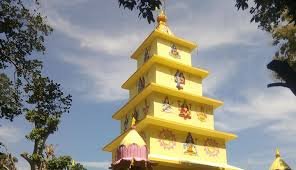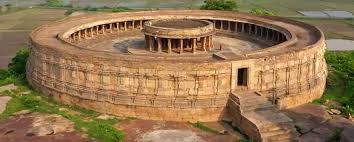Introduction
Nestled in the serene landscape of Singrijan, near Dimapur, the Shiva Temple stands as one of Nagaland’s most revered religious sites. Dedicated to Lord Shiva, this temple attracts devotees and tourists alike, offering a peaceful retreat for prayer and meditation. The temple holds deep spiritual significance and serves as an important center for Hindu worship in the region.
With its historical roots and cultural importance, the Shiva Temple in Singrijan continues to be a beacon of faith. Whether you are a devotee seeking divine blessings or a traveler exploring Dimapur’s rich heritage, this temple offers a spiritual experience like no other.
The Historical Roots of Shiva Temple (Singrijan)
The origins of Shiva Temple in Singrijan trace back several decades, with strong connections to Hindu traditions in Nagaland. According to local beliefs, the temple was built by Hindu settlers who wanted to establish a sacred place for worshiping Lord Shiva. Over time, it grew in popularity, becoming an integral part of the religious landscape in Dimapur.
Architectural Beauty of the Temple
The Shiva Temple in Singrijan showcases traditional Hindu architecture with a touch of local craftsmanship. The temple’s entrance is adorned with intricate carvings, leading to the sanctum where the Shiva Lingam is enshrined. The peaceful surroundings, along with the rhythmic chants of mantras, create a deeply spiritual atmosphere.
The temple structure reflects simplicity yet exudes a sense of divinity.
Spiritual Significance of Shiva Temple
Lord Shiva, one of the principal deities in Hinduism, symbolizes destruction, transformation, and ultimate wisdom. Worshipers believe that offering prayers at this temple can bring:
- Peace of mind and relief from negative energies.
- Blessings for good health and prosperity.
- Fulfillment of wishes and removal of obstacles.
Devotees often perform abhishekam (ritual bathing of the Shiva Lingam) with milk, honey, and holy water, followed by chanting of powerful mantras like “Om Namah Shivaya.” The temple priests conduct daily aarti and pujas, enhancing the spiritual vibrancy of the place.
Festivals Celebrated at Shiva Temple (Singrijan)
The temple comes alive during major Hindu festivals, attracting large numbers of devotees. Some of the most celebrated occasions include:
1. Maha Shivaratri – The Grand Celebration
Maha Shivaratri is the most significant festival celebrated at the Shiva Temple in Singrijan. Devotees observe fasting, offer prayers, and chant Shiva bhajans throughout the night.
2. Shravan Month – Special Worship Rituals
During the Hindu month of Shravan (July-August), the temple sees a surge in visitors, as this period is considered highly auspicious for Shiva worship. Devotees offer bilva leaves, water, and flowers to Lord Shiva, seeking his divine blessings.
3. Kartik Purnima – A Festival of Lights
Celebrated in November, Kartik Purnima marks another important event at the temple. The entire temple is illuminated with oil lamps, and special prayers are conducted to honor Lord Shiva.
4. Nag Panchami – Worship of the Divine Serpent
Since Lord Shiva is often associated with snakes, Nag Panchami holds special importance at the temple. Devotees offer milk and prayers, seeking protection from evil forces.
Community Involvement and Social Activities
The Shiva Temple in Singrijan is not just a place of worship but also a center for community welfare. The temple committee actively organizes charity programs, free food distribution (bhandara), and medical camps for the underprivileged.
Additionally, the temple conducts spiritual discourses and meditation sessions, allowing visitors to experience a deeper connection with divine energy. Such activities help foster unity and promote religious harmony in the region.
Visitor Experience: A Journey to Divine Peace
A visit to the Shiva Temple in Singrijan is a soul-enriching experience. As you step into the temple, you are welcomed by the soothing sounds of bells and devotional chants. The sacred atmosphere instantly brings a sense of peace and positivity.
Many visitors find the temple an ideal place for meditation and reflection. The temple’s peaceful surroundings, combined with the fragrance of incense and the rhythmic chanting of prayers, create an environment perfect for spiritual rejuvenation.
How to Reach Shiva Temple (Singrijan, Dimapur)
1. By Air
- The nearest airport is Dimapur Airport, located approximately 15 km from the temple.
- Visitors can hire taxis or auto-rickshaws to reach the temple from the airport.
2. By Rail
- Dimapur Railway Station is the closest railhead, well-connected to cities like Guwahati and Kolkata.
- From the station, local transport options are available to reach Singrijan.
3. By Road
- The temple is accessible via NH-29, making it easy for visitors traveling by car or bus.
- Private taxis and public transport services operate frequently between Dimapur and Singrijan.
Best Time to Visit the Temple
Although the temple is open throughout the year, the best time to visit is during Maha Shivaratri and the month of Shravan, when the spiritual energy of the place is at its peak. The winter months (October to March) also offer pleasant weather for temple visits.
Conclusion
The Shiva Temple in Singrijan, Dimapur, is more than just a place of worship—it is a sacred space where devotees connect with divine energy. With its rich history, spiritual significance, and vibrant festivals, the temple continues to be a cherished religious landmark in Nagaland.
Whether you are a devotee seeking Lord Shiva’s blessings or a traveler exploring Nagaland’s spiritual heritage, this temple offers a profound experience. So, the next time you visit Dimapur, make sure to stop by this divine sanctuary and immerse yourself in its sacred ambiance.





